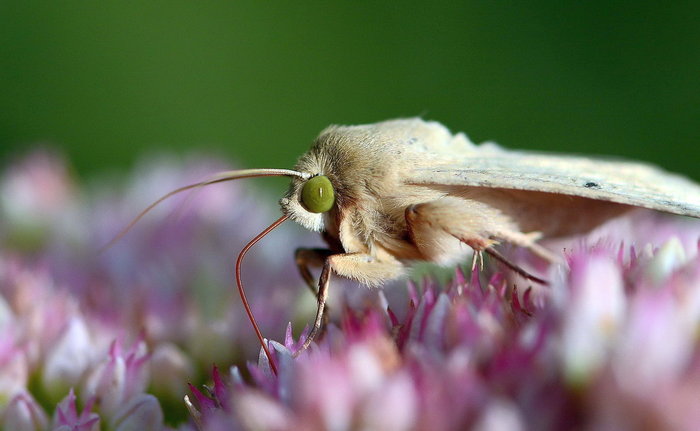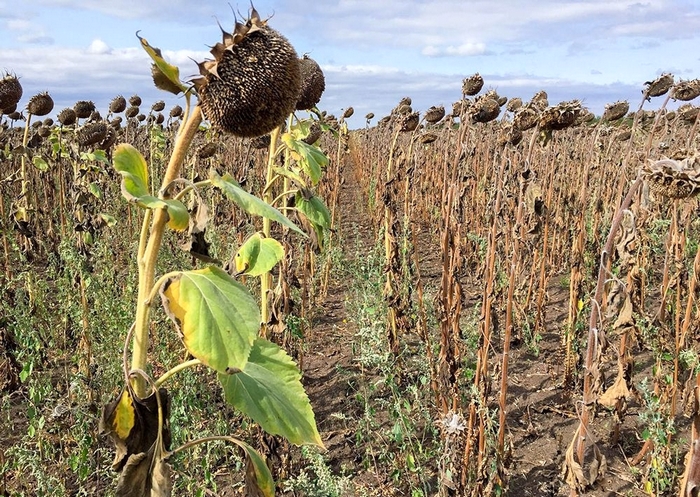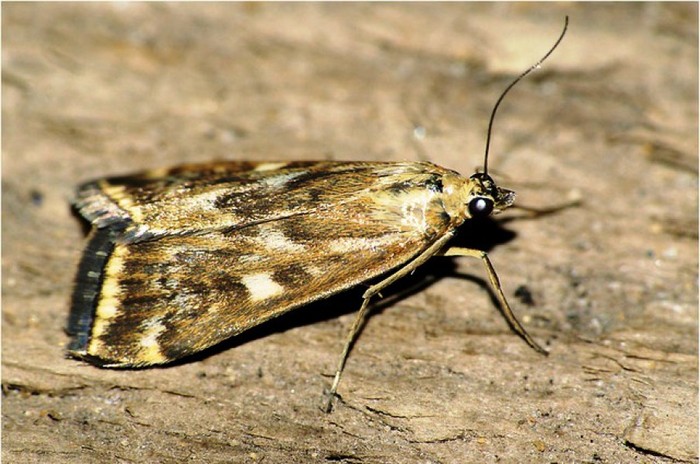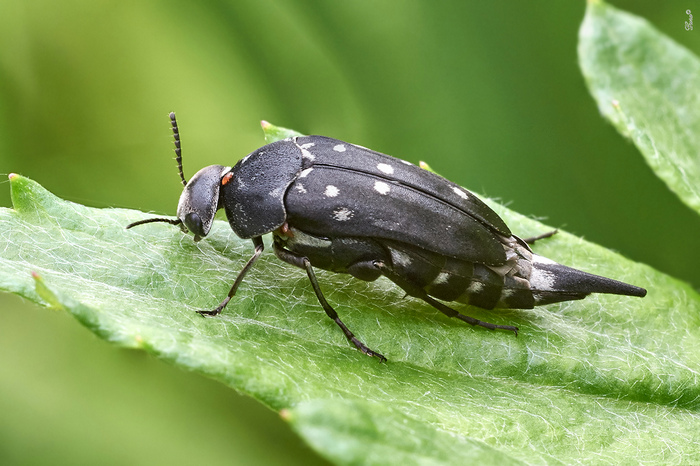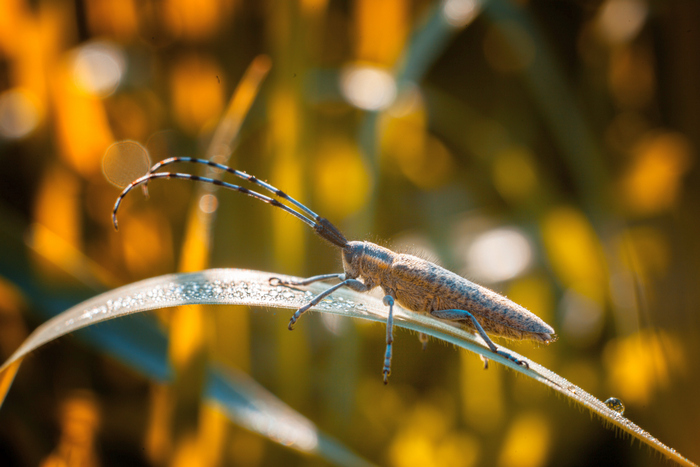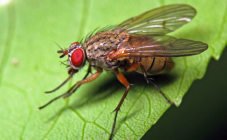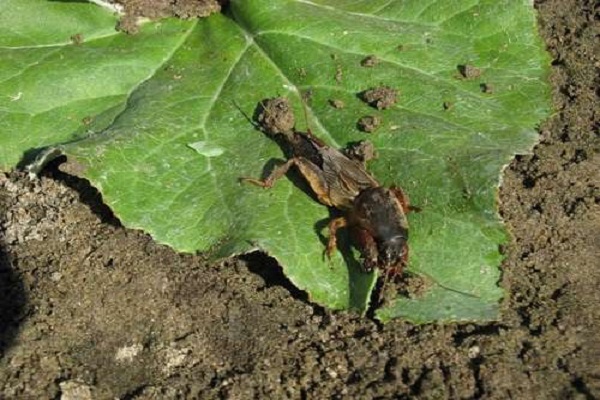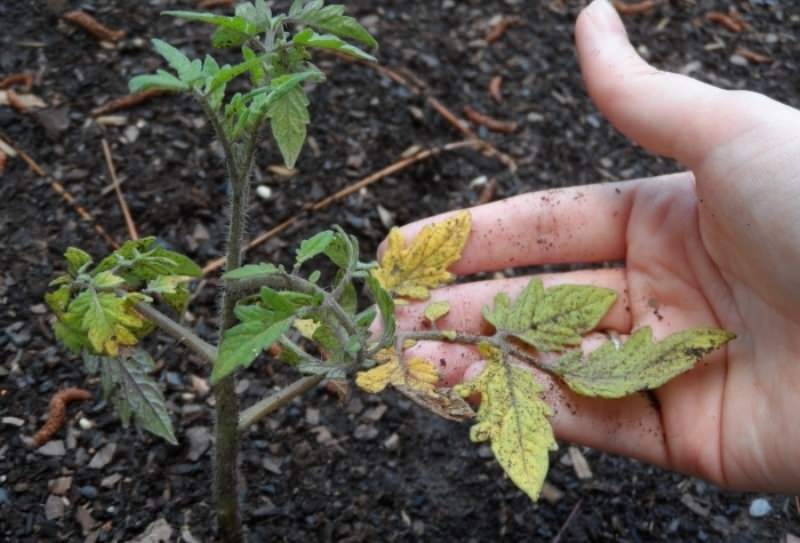Content:
The sunflower is a cultivated annual plant, the characteristic features of which are the height and power of the stem. The root system is strong, sinks several meters into the soil layers, the lateral roots reach about 2 meters in diameter.
The stem of the plant is strong and fleshy, but the core is loose. One stem can form from 15 to 35 leaves. They are rough to the touch, the tips are pointed. At the top of the shoot, a large inflorescence is formed, surrounded by green leaves.
Unfortunately, even such a powerful plant is sometimes attacked by pests. It is about them that will be discussed in this article.
Sunflower scoop
The description should begin with the fact that of the entire family of moths, the greatest damage to agricultural land is caused by cotton moths, field moths, alfalfa and wormwood moths. The vast majority of species develop up to three generations.
For the purposes of this article, the sunflower scoop is a wormwood species of butterfly. It is she who harms the fields of sunflower seeds to a greater extent. In addition, in the southern regions, a cotton scoop often appears on sunflower. Measures to combat them are similar.
The first generation of scoops develops to a greater extent on weeds and is less harmful due to the small amount. The second and third generations cause the greatest harm to seedlings and adult plants, which, under favorable weather conditions, develop in late July - early August.
Considering that during the growing season of plants, the number of moths significantly increases just in time for the formation of the sunflower basket, the harm from this insect is sometimes catastrophic. The insect's danger is that it feeds on sunflower juice, as well as its soft tissues. If the necessary measures are not taken, the plants will die.
The most common pest is in the southern part of Ukraine. The scoop goes through several stages of its development - first the eggs, then the caterpillar and finally the butterfly. The wingspan of an adult can reach 40 mm. The front wings are yellow and gray, while the rear ones have burgundy stripes and a dark spot in the very center.
The tracks are up to 40 mm long. The body is covered with numerous small spines. The color can range from yellow and pale green to brown. The pupa hibernates in the ground.
Sunflower-borne scoop control measures
A caterpillar on sunflower is, unfortunately, not uncommon, so every agronomist should be aware of control methods and preventive measures. The fight against the scoop on sunflower is limited to the following manipulations:
- Application of insecticides for sunflower at the initial stage of caterpillar development. Biologicals in demand are concentrated Lepidocide, Bitoxibacillin. If necessary, re-irrigation is carried out after 7-10 days. Decis, Arrivo and Sherpa are very popular among chemicals.Insecticidal preparations must be used strictly in accordance with the attached instructions for use.
- Thorough inspection of crops, use of pheromone traps if necessary.
- Repeated irrigation with insecticides against scoops.
Prevention measures
Timely and regular removal of weeds, deep autumn plowing, and row spacing.
Preventive irrigation of plants with biological products or chemicals.
Other sunflower pests
In addition to the scoop, there are other insects that do not mind eating a sunflower.
Broomstick on sunflower
One of the most dangerous pests - sometimes it destroys the crop by 100%. But this is not an insect pest, but a parasitic plant that is widespread throughout the world.
The people call it a spinning top. The most effective way to combat is to give preference to hybrid sunflower varieties that are resistant to the parasite.
An important role is also played by the observance of the rules of crop rotation, the cultivation of crops that inhibit the development and growth of broomrape. If the situation is out of control, it is advisable to use a chemical called Eurolighting.
Meadow moth on sunflower
It is dangerous during periods of increase in its numbers - it happens approximately with an interval of 10-12 years. In these years, the indicators of the amount of the harvest are less by at least 60%.
The highest threshold of harmfulness is more than 10 individuals per 1 sq. M.
To prevent insect infestation, you should regularly deep plow, treat the soil between rows, remove weeds, and irrigate plants and soil with chemicals such as Lepidocide and Bitoxycybalin.
Sunflower thornbearer
A miniature pest, which very few people manage to consider right away.
The beetle is black in color, covered with gray hairs of short length. There is one large spike on the abdomen, and the whiskers are like threads. The wings are short, not completely covering the abdomen. The head is always down, the legs are colored reddish-yellow.
Effective methods of struggle are:
- deep plowing;
- regular, timely removal of weeds and plant residues;
- irrigation of plants and soil with chemicals (for example, Fufanon, Vantex).
Sunflower barbel
Able to reach a length of 20 mm, its body is covered with multiple yellow hairs. The larvae have no legs and are pale yellow in color.
Females lay in the inner part of the sunflower stem. To do this, they preliminarily gnaw out the tissues of the shoot, so that a "platform" with a total diameter of 6-8 mm with a deep gap in the very center is formed. Each female lays approximately 50 eggs.
The fight against this pest will be effective if:
- sow early;
- when cutting a faded culture, do it as close to the ground as possible;
- regularly remove tops from the fields;
- get rid of weeds.
Sunflower moth
Ways of struggle may not give the desired result, it is practically impossible to completely protect your plants from this "misfortune".
The highest resistance to this pest is possessed by hybrid sunflower varieties from armored varieties. Their seed is characterized by a strong inner shell, which the caterpillars cannot gnaw through.
A similar protective carapace forms about a week after flowering begins. As a result, insects feed only on leaves, the grains remain unharmed.
A sunflower is a picky plant that even a novice agronomist can grow, but first you should familiarize yourself with the list of diseases and pests that the culture is susceptible to. It is always easier to prevent a problem than to get rid of it. Because it is very difficult to deal with a large number of insects.
